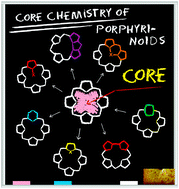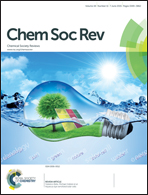Core chemistry and skeletal rearrangements of porphyrinoids and metalloporphyrinoids
Abstract
Core alteration, affording heteroporphyrinoids and carbaporphyrinoids, allows for the exploration of porphyrin-like or porphyrin-unlike coordination chemistry. Such a strategy has provided a fundamental change in the approach to macrocyclic organometallic chemistry. The specific reactivity of porphyrinoids has offered an insight into reactions inside particularly shaped macrocyclic architecture, including metal-mediated organic transformations. This review focuses on alterations of macrocycles, made of four carbocyclic/heterocyclic subunits, which resemble the structure of porphyrin or porphyrin isomers, providing, however, remarkable porphyrin-like (XNNN), (CNNN), (CNCN) or (C2NNN) surroundings. To facilitate the understanding of the discussed subject matter, all addressed reactions reflecting core reactivity have been formally grouped into nine categories distinguished by the principal type of transformation addressed: (1) alkylation or arylation, (2) core heteroatom replacement, (3) oxidation and oxygenation, (4) substitution, (5) macrocyclic fusion, (6) core bridging, (7) ring contraction, (8) ring expansion, and (9) C–H and C–C bond activation. The distinctive macrocyclic environment creates a long-sought opportunity to trap unique organometallic transformations which include instances of benzene ring contraction to cyclopentadiene or the formation of an unprecedented metalloporphyrinoid: 21-pallada-23-telluraporphyrin. This review offers certain challenging perspectives which target the goals of organometallic bond activation.


 Please wait while we load your content...
Please wait while we load your content...